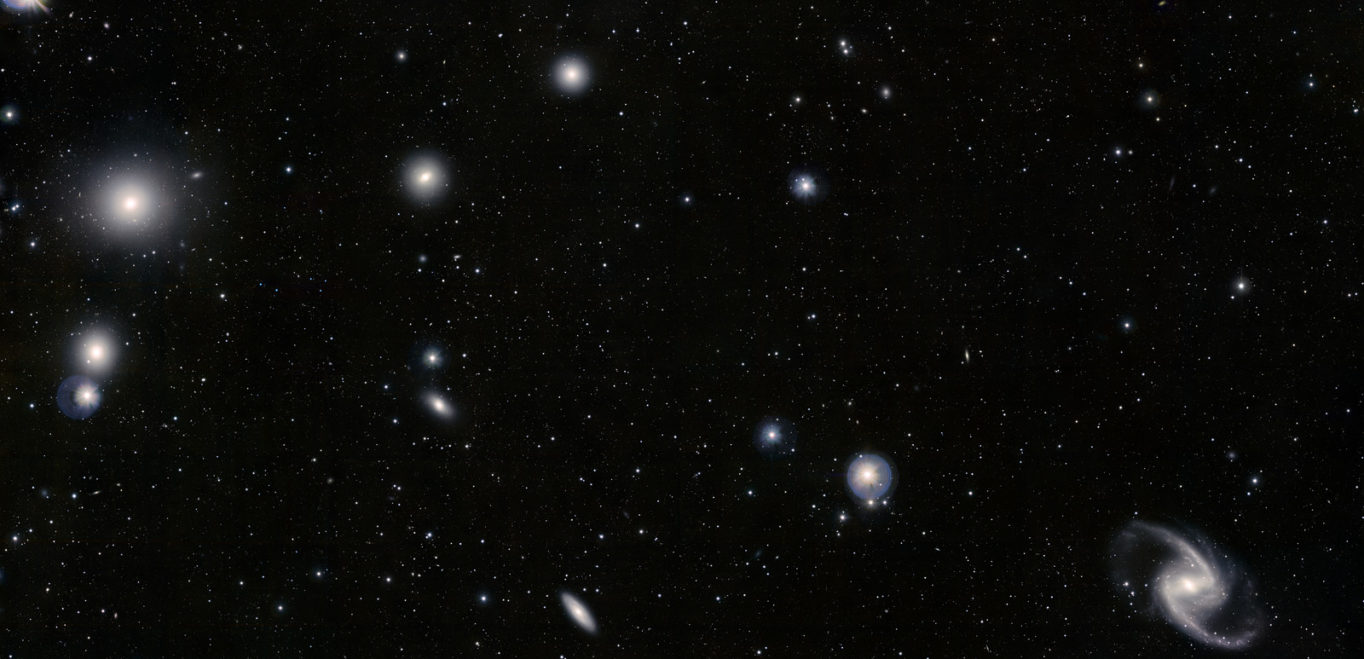Welcome to the April edition of Eyes on the Night Sky where we will give you the low-down on what to look out for during this month.
April will kick off with a total solar eclipse – Unfortunately, we won’t be able to see much of the eclipse on the mainland of the UK but the lucky folk in the west of Ireland will be able to see a partial eclipse from about 8pm until sunset.
Darkness falls at around 10pm at the beginning of the month and 11pm at the end.
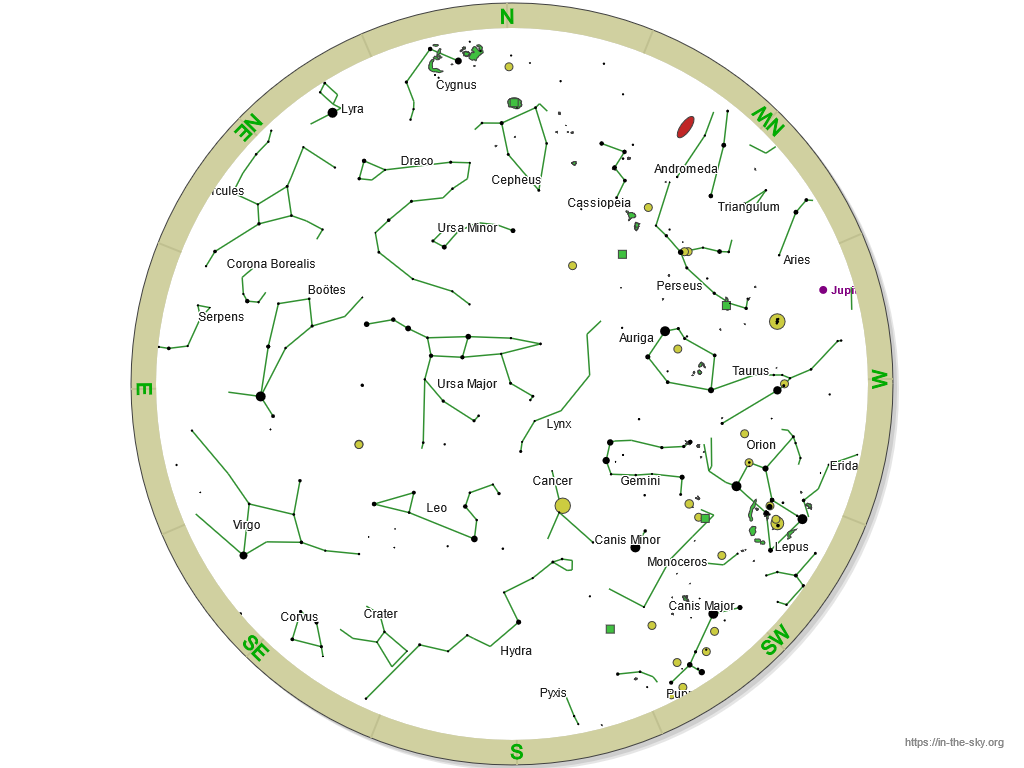
At 10pm, the constellations that are dominant in the night sky during April are Ursa Major, which sits high in the sky, Leo and Virgo being well-placed for feasting the eyes on the rich field of galaxies. Orion continues to sink low into the western horizon and the summer constellations of Hercules and Lyra rise in the east.
The New Moon occurs on 8th April and the Full Moon on 24th April.
Lyrid Meteor Shower
On 22nd-23rd April, the Lyrid meteor shower will peak – however the nearly full moon’s light may prevent seeing the fainter meteors. They are visible from 14th -30 April, so it is worth watching the skies for shooting stars during that time when the Moon’s light doesn’t interfere with viewing. The Lyrids are associated with Comet Thatcher and the radiant is situated in the constellation of Lyra.
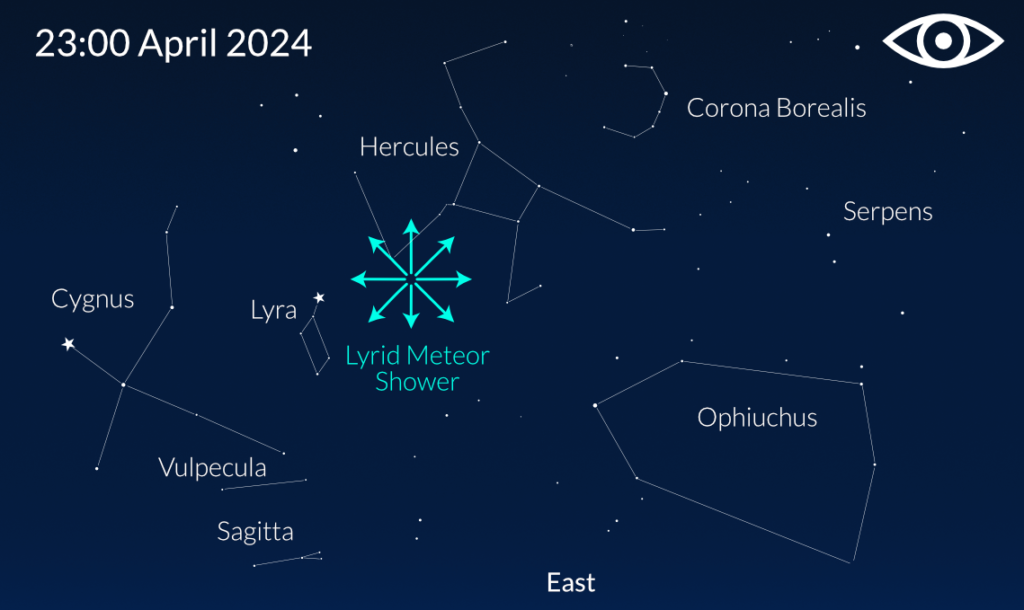
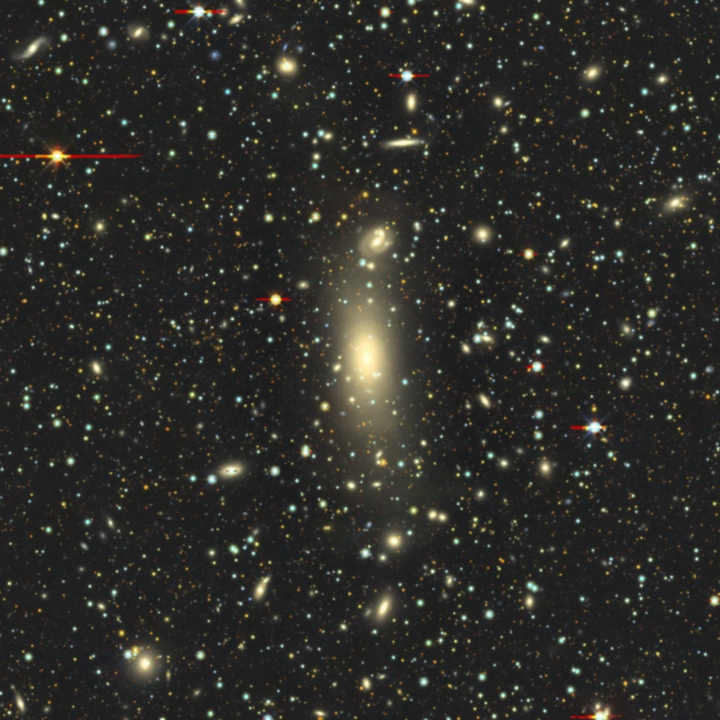
Galaxy Season
April in the UK is known as the galaxy season. Galaxies comprise a gravity-bound collection of stars, gasses, dust and planets and come in all shapes and sizes. Some galaxies might only contain thousands of stars and others can have trillions of stars; the largest galaxy we have discovered so far in 2022 is ESO 383-76, which is 1.76 million light years in diameter, which is 17 times larger than our own Milky Way! Due to mutual gravity, galaxies can group together and form clusters.
(Photo: ESO 383-76 by the DESI Legacy Imaging Surveys, Data Release 10.
There are dozens of galaxies visible to small telescopes from the low-lying constellation of Virgo, through Leo, Coma Berenices, Canes Venatici right up to Ursa Major. Some will look like grey, fuzzy blobs, distinct from stars and others may reveal fascinating spiral arms, dust lanes and bright cores. It is a great time of year to test the light-gathering power of your telescope and get out to a dark sky to see how many galaxies you can discover. You can use apps such as Stellarium to find where these galaxies lay and see them for yourself.
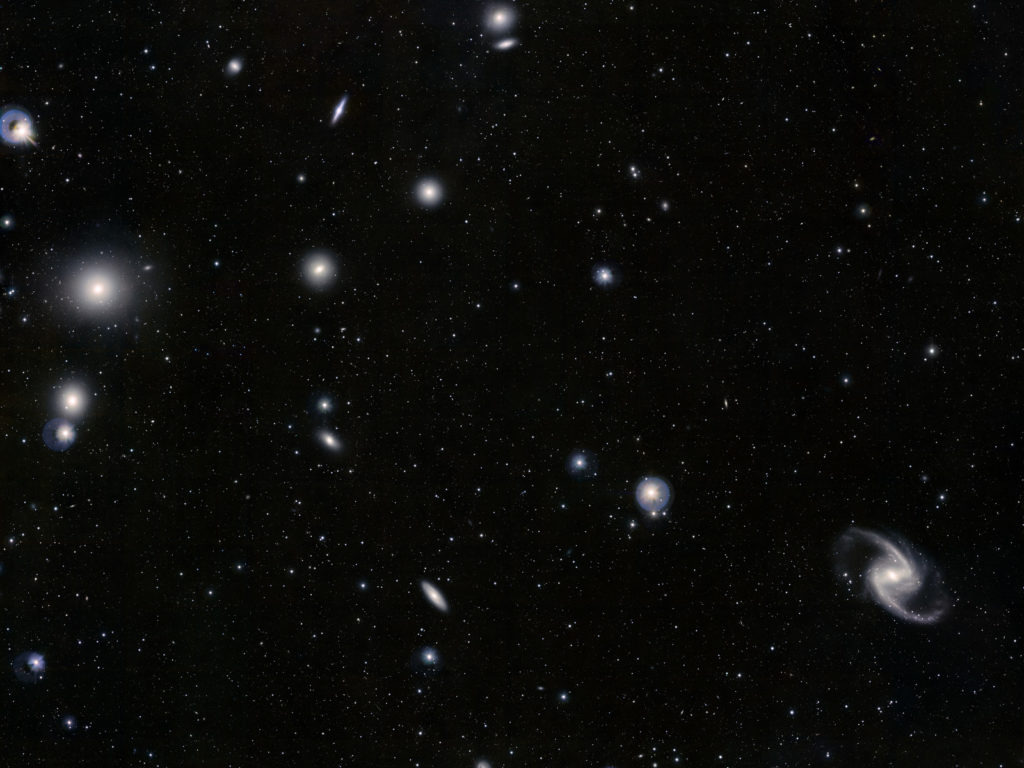
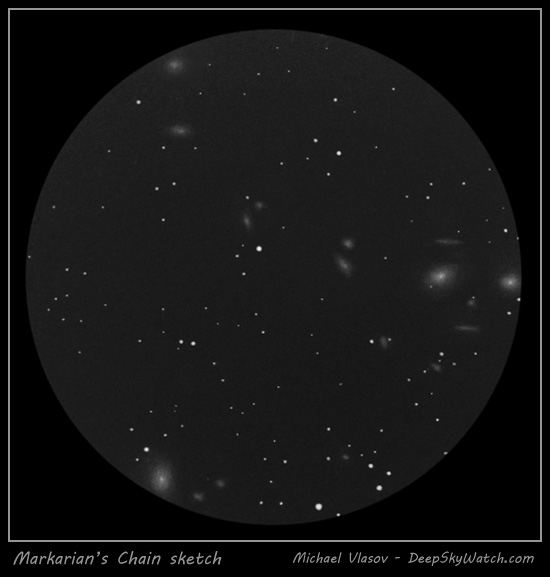
You could be scanning the sky with your telescope and suddenly, a group of ‘faint fuzzies’ pop into your eyepiece as illustrated below by Michael Vlasov of deepskywatch.com. The fact that these ‘blobs’ are galaxies containing millions or trillions of stars, dozens of millions of light years away, and may contain planetary systems like our own is mind-boggling.
Sketch shared by kind permission by Michael Vlasov, deepskywatch.com
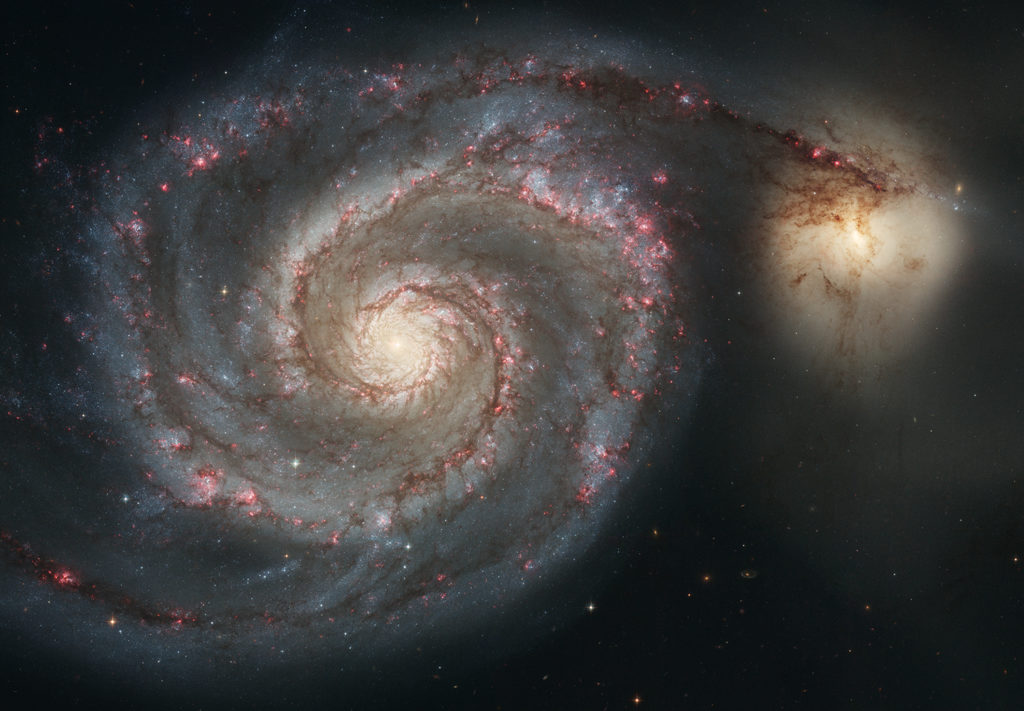
The Whirlpool Galaxy (Messier 51)
RA 13h 29m 53s | Dec +47° 11′ 43″
One pleasing object to study is the Whirlpool Galaxy in the constellation of Canes Venatici, or Messier 51. It is actually two interacting galaxies. The Hubble Telescope revealed that we are witnessing one galaxy passing behind another. The smaller galaxy to the right is NGC 5195 and it has slowly been moving past its larger neighbour, causing a tidal force to pull at M51, causing its arms to distort. This force also triggers star formation.
Using the star hopping method, look for the constellation Ursa Major and look for the star at the end of the ‘pan handle’ called Alkaid – sight it in your finderscope and slowly move your telescope slightly to the right until you see a very faint blob – centre it and look through your eyepiece. A five-inch telescope will reveal a dim fuzzy blob but through telescopes of eight inches aperture and larger, you will start to see the spiral arms of the larger galaxy and its companion. Use averted vision to tease out more detail.
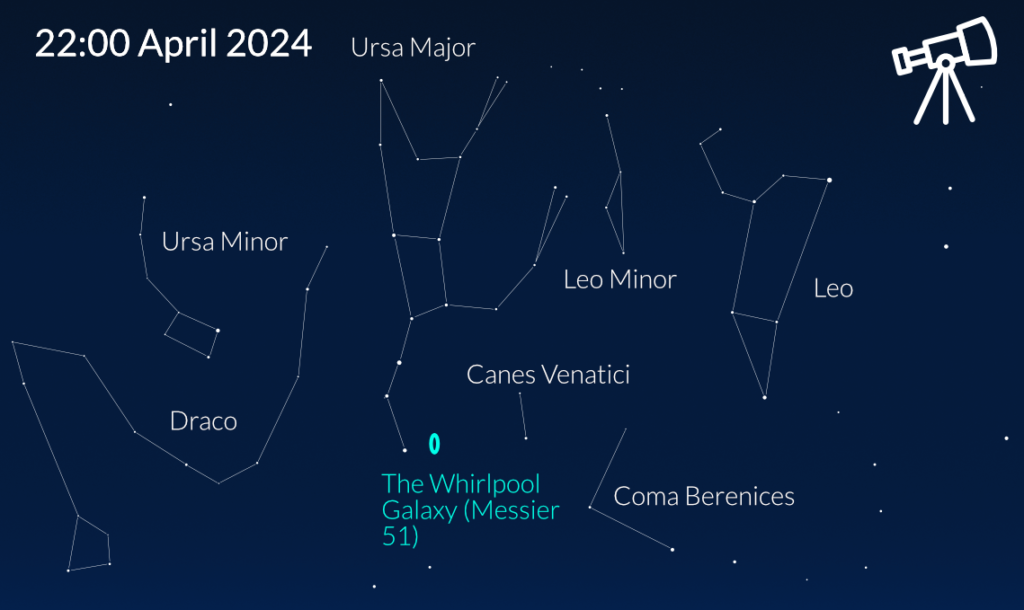
Zodiacal Light
There is still time to look out for the amazing Zodiacal Light. Visit the Elan Valley International Dark Sky Park and look out for that lovely cone of ethereal light shine diagonally into the darkening sky – this is usually at its best at around an hour after sunset.
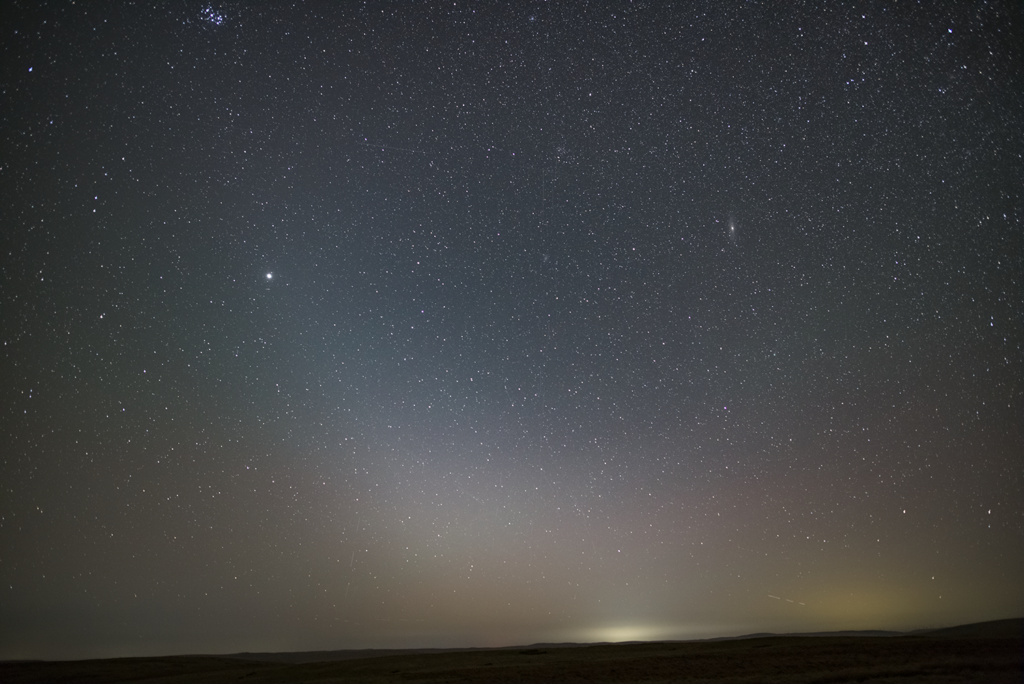

Constellation of the Month – Leo the Lion
The constellation of Leo can be seen in the spring after it gets dark. The easiest way to find it is by looking for a backwards question mark (asterism) in the night sky. The star at the bottom of the asterism is called Algieba which means ‘Lions Mane’. Look for the bright star Regulus (meaning king star) and you should be able to spot the rest of the lion’s recumbent body.
In ancient times, this constellation was universally known as a lion, from the ancient Egyptians who revered this constellation, the ancient Persians right through to roman and Greek mythology.
In Greek mythology, Leo represented the Nemean Lion who caused a lot of trouble in his time. He had a habit of taking people to his lair and challenging warriors to come and rescue them. Heracles was the only one to be able to defeat this lion, who boasted a golden mane that protected him from being killed by weapons. Heracles put his weapons down and was able to defeat the lion with his bare hands.

